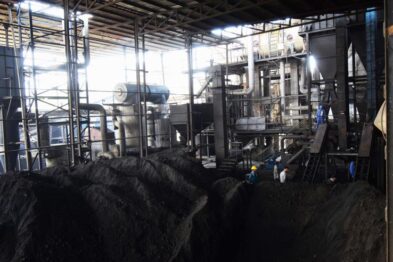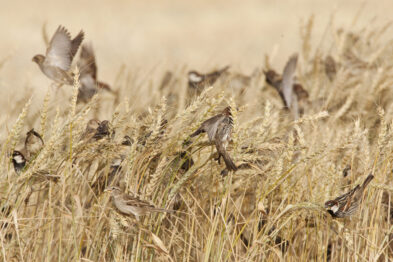Scientists say Indian farmers’ eager uptake of a painkiller for their cattle in the 1990s has led to the inadvertent deaths of half of a million people and massive economic losses — not from any harm to the cattle, but from the loss of millions of vultures, scavengers that historically devoured animals’ remains before they could rot and become vectors for disease.
In early 1990s, the patent on a painkiller called diclofenac lifted, making it cheap and widely available for India’s massive agricultural sector. Farmers use it to treat a wide array of conditions in cattle. But even a small amount of the drug is fatal to vultures. Since the beginning of its widespread use in India, the domestic vulture population has dropped from a whopping 50 million to just a few thousand — and according to a study published by the American Economic Association, the impact on humans has been monumental, reflecting the vital role the scavengers play.
Vultures have been a crucial part of India’s ecosystems for centuries. According to the authors of the study, entitled “The Social Costs of Keystone Species Collapse: Evidence From The Decline of Vultures in India,” the large, homely birds are a “keystone species” — one that plays an irreplaceable role in an ecosystem.
They’re the only scavengers that feed entirely on carcasses, and they do it extremely efficiently, quickly devouring the remains and leaving little behind to spread disease. The study authors say India’s vultures would typically eat at least 50 million animal carcasses every year, before their population was decimated. In doing so, they prevented the dead farm animals from rotting, and the deadly bacteria and other pathogens that thrive in carcasses from being transmitted into human populations.
“In a country like India with prohibitions on eating beef, most cattle end up turning into carcasses,” Anant Sudarshan, an associate professor of economics at the University of Warwick in England, who co-authored the study, told CBS News. “Vultures provide an incredible disposal service for free. … A group of vultures takes about 45 minutes to turn a cow carcass into bone.”
The vultures’ keen appetite also helped keep the populations of competing scavengers in check, such as feral dogs and rats, which can transmit rabies and a host of other diseases.
In 1994, farmers began giving diclofenac to their cattle and other livestock. The drug causes kidney failure and death in vultures that feed on the carcasses of animals given the painkiller, and the population of the birds shrank from 50 million to just 20,000 over the course of the ensuing decade alone.
Without the vultures around to do the job, farmers started disposing their dead livestock in local bodies of water, which caused water pollution — and another way for pathogens to reach humans.
Sudarshan and study co-author Eyal Frank, an environmental economist at the University of Chicago Harris School of Public Policy, examined the impact of the drastically reduced vulture population on human health by mapping vulture habitats with health data from more than 600 districts in India. They said their research shows 100,000 human deaths every year between 2000 and 2005 could be linked with the decreased vulture populations.
It also shows economic losses they estimated at $69 billion per year, largely associated with premature human deaths due to the collapse of the scavenger population.














